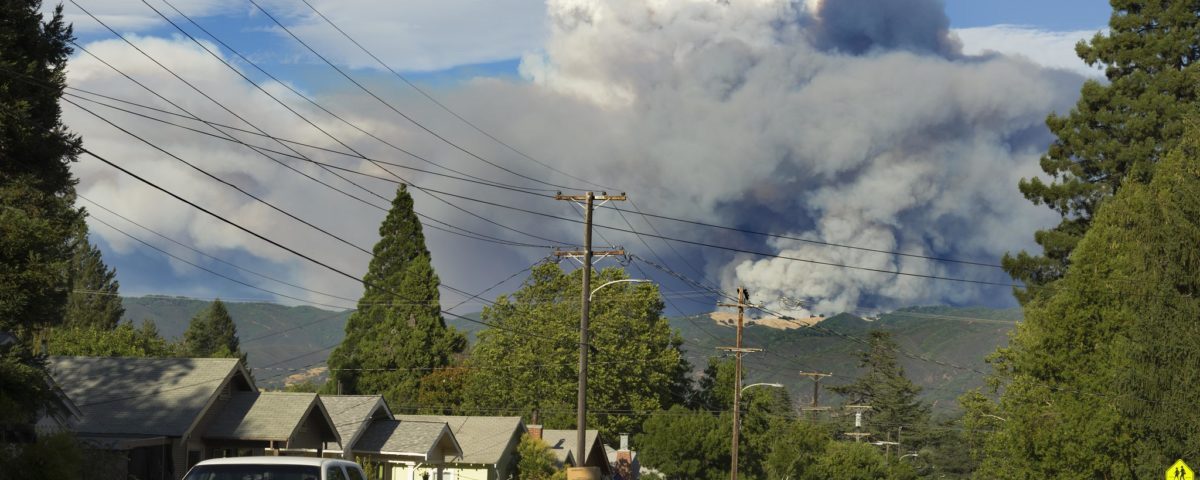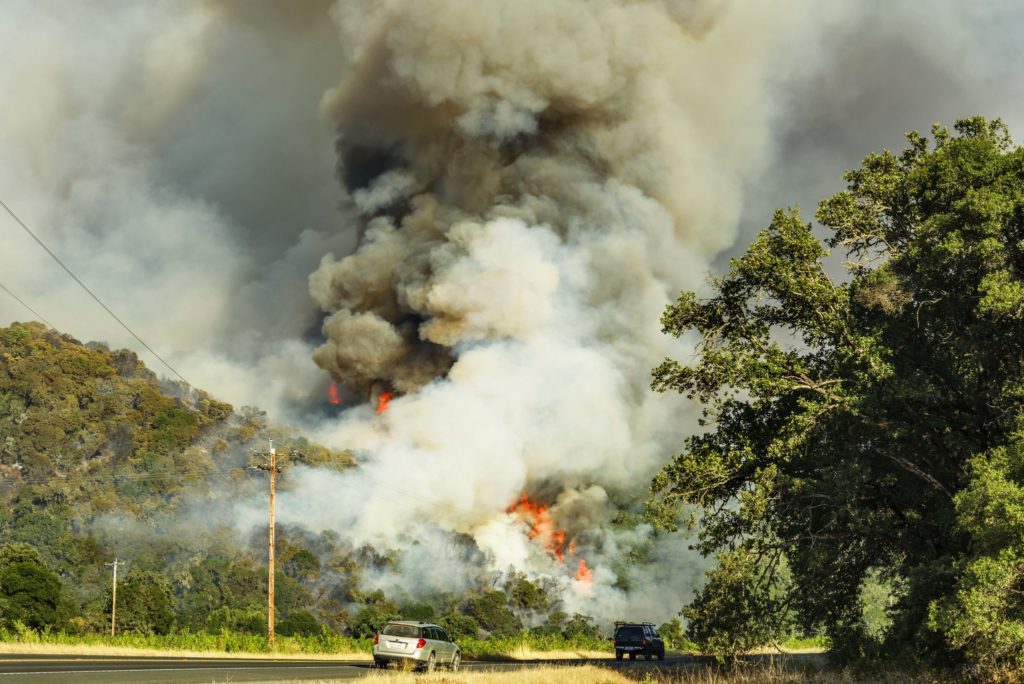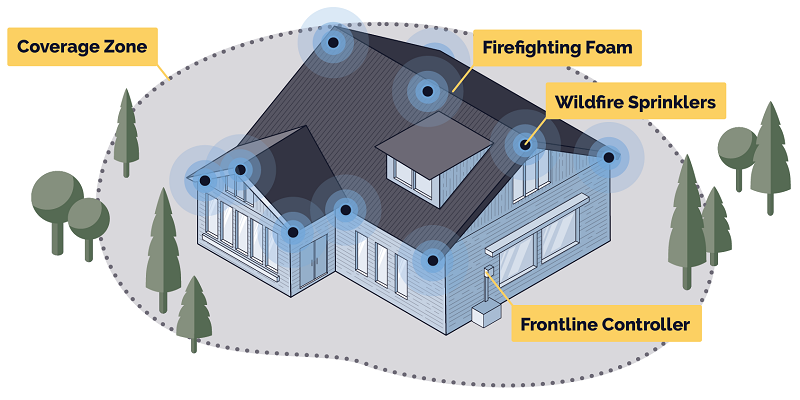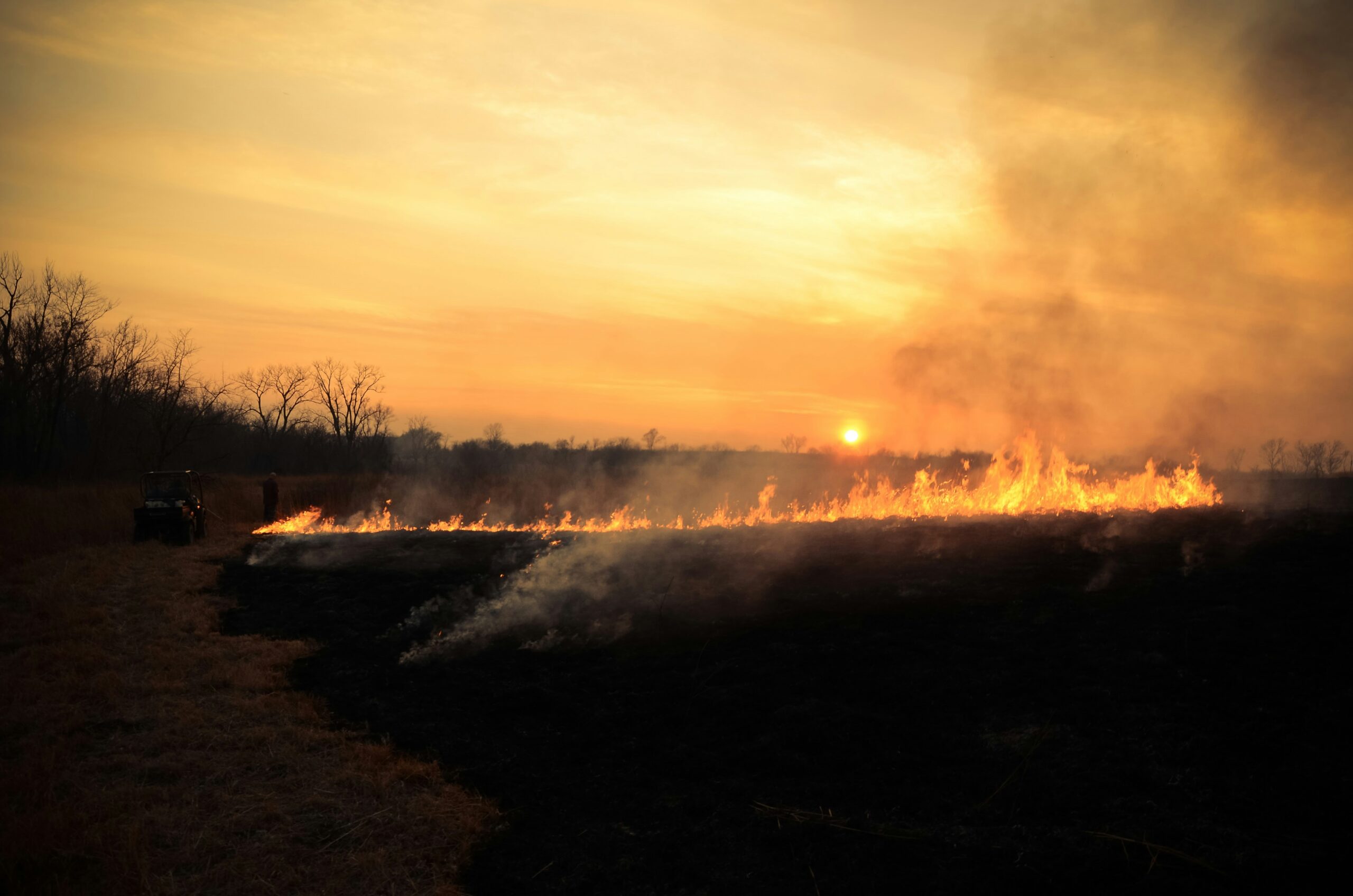
California has experienced countless destructive wildfires over the past several years, but few compare to the devastation caused by the Mendocino Complex Fire—the second-largest wildfire in California history.
Composed of two separate fire incidents—the Ranch Fire and the River Fire—the Mendocino Complex Fire impacted several communities throughout the Mendocino and Lake Counties, destroying hundreds of thousands of acres of land and hundreds of structures. So, what caused this disaster and how much damage did these communities actually suffer?
Let’s take a closer look at the causes, history, and statistics behind California’s Mendocino Complex Fire.
Protect your home from wildfire by installing a Frontline Wildfire Defense exterior sprinkler system. For more information, contact us today for a free consultation.
What Caused the Mendocino Complex Fire?
First and foremost, what caused this major disaster? As mentioned, the Mendocino Complex Fire was made up of two separate incidents. The Ranch Fire, which broke out in July 2018, was a man-made fire caused by a hammer spark—while the River Fire is still considered under investigation.
- A devastating hammer strike. Per the California Department of Forestry and Fire Protection, the Ranch Fire “was caused by a spark or hot metal fragment landing in a receptive fuel bed.” More specifically, the spark was caused by a property owner using a hammer to drive a metal stake into the ground to plug an underground yellow jacket nest.
- Attempted suppression. While the property owner attempted to put out the fire with a water hose and then a PVC water line, the blaze quickly grew out of control. After his initial attempts to suppress the fire, it spread to a shade cloth on his property, and then to other areas of his property.
- Rapid spread. Due to strong winds, high temperatures, and dry vegetation, the Ranch Fire tore through Mendocino County, injuring three firefighters and killing one in the process. Per Cal Fire, the Ranch and River Fires were active for 160 days and were finally contained on January 4, 2019.
This incident should emphasize the importance of responsible landscaping, home defense, and fire suppression strategies. Even a single spark can quickly ignite flammable materials, creating dangerous, uncontainable wildfires.

The Mendocino Complex Fire by the Numbers
Together, the Ranch Fire and River Fire destroyed a significant amount of land and caused hundreds of millions of dollars in damage. Here’s a quick look at the numbers behind the Mendocino Complex Fire according to Cal Fire:
- Acres Burned: 459,123
- Structures Destroyed: 280
- Days Active: 160
- Injuries: 3
- Deaths: 1
These numbers make the Mendocino Complex Fire the second largest in the state’s history, only falling behind the August Complex Fire that broke out in 2020.
How Do Other Major California Wildfires Compare?
Until 2020, the Mendocino Complex Fire was the largest in California history. However, as climate conditions continue to worsen, the state is experiencing more severe and more frequent wildfire incidents every year.
To put the Mendocino Complex Fire into perspective, here are the top 10 largest wildfires in California history based on acres burned:
- August Complex (August 2020): 1,032,649
- Mendocino Complex (July 2018): 459,123
- SCU Lightning Complex (August 2020): 396,624
- Creek Fire (September 2020): 377,693
- LNU Lightning Complex (August 2020): 363,220
- North Complex (August 2020): 318,930
- Thomas (December 2017): 281,893
- Cedar (October 2003): 273,246
- Rush (August 2012): 271,911
- Rim (August 2013): 257,314
Seven out of the 10 largest California wildfires occurred in the past five years, speaking to the increasing severity of wildfires over the years. As this trend is expected to continue, it’s more important than ever for California residents to take steps to prepare for potential wildfires in their area.
How to Prepare for Wildfires
While the future outlook for California wildfires may not be particularly positive, homeowners can reduce their chances of being severely impacted by these events through proactive preparation.
Here are a few key steps you can take to prepare for wildfires:
- Create an Evacuation Checklist: A wildfire evacuation checklist will ensure you and your family know what to do in case your community is impacted by fires. This includes knowing evacuation routes, preparing an emergency supply kit, and knowing what to do after evacuating.
- Create a Defensible Zone: Creating a defensible space around your home includes removing flammable materials from around your home and maintaining the surrounding landscape to reduce chances of ignition.
- Practice Responsible Landscaping: Responsible landscaping includes ensuring plants and shrubbery are regularly trimmed and kept under a certain height. Plants should also be adequately spaced out to make it more difficult for fires to spread on your property.
- Use a Fire Sprinkler System: The Frontline Wildfire Defense System, for instance, proactively hydrates your home and property to significantly reduce the chances of ignition.
While you can’t prevent wildfires or guarantee that they won’t reach your home, you can implement the above practices to reduce the impact of these disasters on your home and family.
Install an Exterior Sprinkler System

